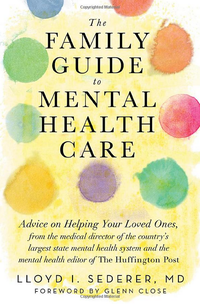
The basics of responding to any illness (after prevention, when possible), including mental illnesses and addictions, are:
-- Detect it (by screening for it and with clinical examination).
-- Diagnose it (by using standardized diagnostic criteria and appropriate tests).
-- Intervene to prevent progression (to further illness, even death) and to restore health.
People directly exposed to a traumatic event that threatens their physical integrity or that of others and who experience fear, helplessness, or horror are at high risk to develop Post-Traumatic Stress Disorder -- as well as depression and excessive use of alcohol, drugs and tobacco.
Traumatic stressors include war, sexual and physical abuse, and disaster. There is often overlap and co-occurrence of symptoms of PTSD (see here) with symptoms of depression, the consequences of substance abuse and traumatic head injury. This overlap may delay or make definitive diagnosis difficult, but it need not prevent intervention.
Intervention with serious mental conditions is both general and specific to the condition. Treatments of PTSD, depression and substance use disorders are specific to the condition, and treatment for mental conditions can be very effective if people are identified as ill and engage and remain in quality care (since not receiving continuous treatment does not work for any condition, physical or mental). What wartime PTSD might look like to a family (and what they can do) as well as its treatment are discussed in a previous HuffPost piece I wrote with Dr. Sandro Galea.
What too often is not well-understood -- nor done -- are the critical, if general interventions that can reduce the likelihood of violence an ill person can direct at him/herself or to others. We can think of helping people at risk for violence in both risk and protective ways.
Risk factors for aggression toward others and for suicidal behaviors are well-known. These can apply across many a diagnostic category and need not await any definitive diagnosis. Safety comes first.
-- Risk factors for aggression include a history of violence and victimization (as a victim or perpetrator); current thinking about hurting someone; an active mental illness (including PTSD, mood disorders and psychosis); unstable mood; active use of alcohol and drugs (non-prescribed); social isolation; and lack of engagement in treatment. The greater access a person has to lethal means of aggression, like guns, the greater the risk of a more extensive and devastating act.
-- Protective factors that can reduce the risk of aggression include a supportive family and community; commitment to a purpose, be it school, work or others; spiritual or religious faith; and hope. In addition, removing access to deadly means of action can help.
None of these risk or protective factors assures against aggression, but they can help to mitigate risk until more is done.
-- Risk factors for suicide include an active mental and addictive disorder (including PTSD, mood and substance use disorders, and psychosis); feeling hopeless or overcome with anxiety; social isolation and lack of support; a tendency to be impulsive; a history of being traumatized or abused; a previous suicide attempt by the person or completed suicide in their family; job, financial or relationship losses; ready access to lethal means of action; and fear of the stigma and consequences of seeking help.
-- Protective factors that can reduce the risk of suicidal behaviors include access to and engagement in quality mental health and addiction services; restricted access to lethal means of suicide (pills and guns); strong connections with family, community and faith; a help-seeking nature; and problem solving and conflict resolution skills that can be called upon during times of crisis.
Here too, none of these risk or protective factors assures against suicidal acts, but they can help to mitigate risk until more is done.
We all puzzle about what might be done in the wake of tragic acts, which too often darken families, and communities, and fill the popular press. Answers to this puzzle are more known than is generally appreciated. Taking an approach that identifies and addresses risk and protective factors in violence, whether it be directed against the self or others, is one thing we can do right now.
The National Suicide Prevention Lifeline is available 24 hours a day at (800-273-TALK).
---
 Dr. Sederer's new book for families who have a member with a mental illness is The Family Guide to Mental Health Care (Foreword by Glenn Close).
Dr. Sederer's new book for families who have a member with a mental illness is The Family Guide to Mental Health Care (Foreword by Glenn Close).
www.askdrlloyd.com http://www.askdrlloyd.com
The opinions expressed here are solely mine as a psychiatrist and public health advocate. I receive no support from any pharmaceutical or device company.
Copyright Dr. Lloyd Sederer